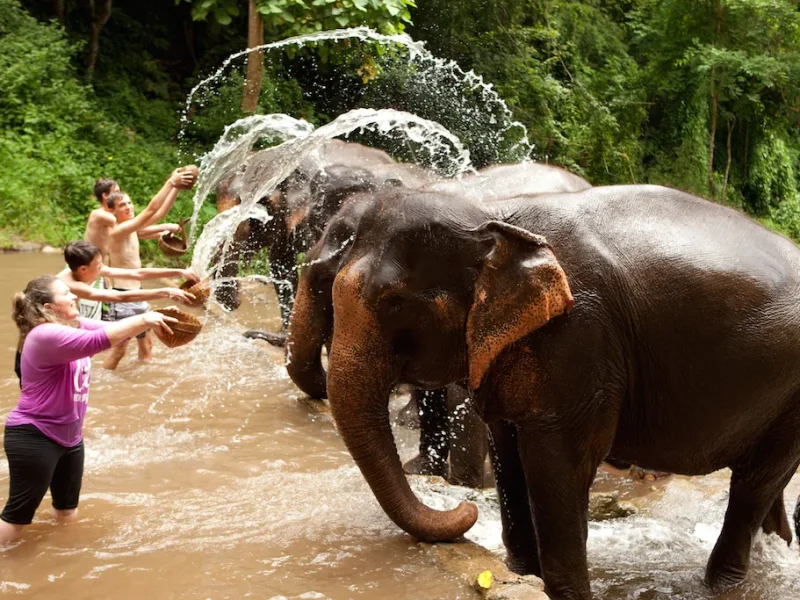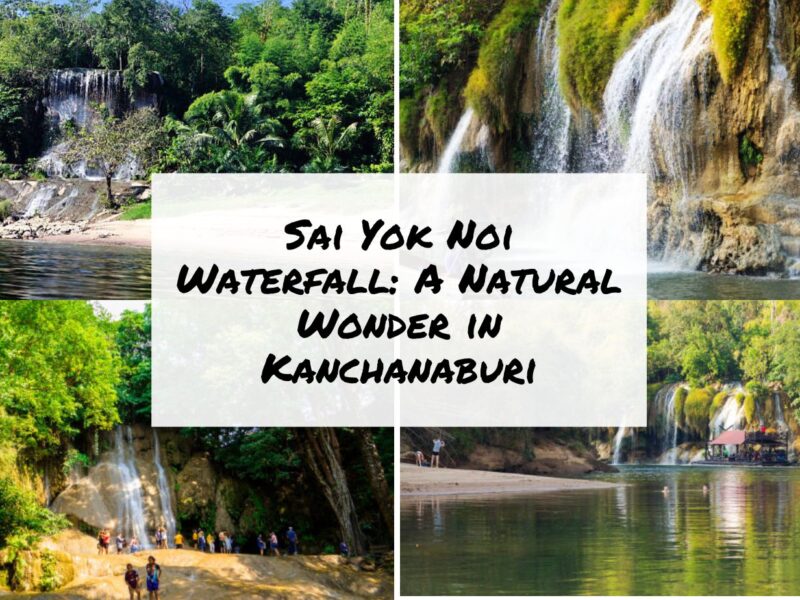We discuss the activities we participated in during the Thai Water Festival and the traditional Songkran celebrations, held annually from April 13 to April 15. It is well-known all around the world for the joyous celebrations that are held in honor of water.
One of the most popular misunderstandings about Songkran, also known as the Thai New Year, is that it involves a group of young children shooting water pistols at other celebrants who have been carefully picked. Songkran, which takes place in April, is a holiday that welcomes everyone.
The word Songkran literally translates to “to relocate” or “to change locations.” Songkran became a part of the Water Festival at some point in the course of Thailand’s history. The Water Festival has traditionally been held on the same day as the zodiacal transition that Songkran celebrates. Thais strongly believe in the spiritual cleansing power of water, which they think can wash away any misfortune or resentment accumulated over the previous year and bless them with good fortune and happiness for the year to come. The tradition of collecting water that had been used to clean sculptures of Buddha was what gave rise to the celebration in the first place. After then, it was utilized to bestow blessings on the villagers and family members by placing it on their shoulders and walking around the community. Songkran has developed into a kingdom-wide water fight, which takes place in April, which is, fortunately, the hottest month in Thailand. Its origins may be traced back to more subdued beginnings. As is the case with a great number of historical and cultural celebrations, the focus has turned away from the religious and spiritual and toward enjoyment and merriment.
However, this is not to say that any religious overtones can be found anywhere in the text at this point. Before turning their attention to what they wish the future year will bring, Thais will spend a portion of Songkran traveling to different Buddhist monasteries known as Wats to donate alms and seek forgiveness. People in Thailand make New Year’s resolutions, much like people in Western cultures do, and they clean themselves and their homes by giving them a comprehensive cleaning session.
The largest Songkran celebrations take place in Chiang Mai, which is the capital of northern Thailand. Some of the events are scheduled to stretch for a full week. People in northern Thailand also tend to gather sand, which they then transport to the monastery in their own communities. This sand, which is used to refill the monastery before being molded into mounds and decorated with colorful festive flags, is meant to represent the dirt that was washed away over the course of the previous year.
When it comes to the contemporary celebration of Songkran in Bangkok, Khao San Road is undoubtedly the epicenter of all the action. The backpacker zone is completely cut off from the surrounding traffic, which contributes to the district’s electrifying vibe. Poles with water guns the size of cannons, pressure hoses, and enormous cold boxes are maintained by Thai and foreigners, who are accompanied by adequately strong guys who man the buckets.
Read More: 10 Of The Most Amazing Waterfalls In Thailand
It is hard to leave your hotel room without encountering disorder, and you will quickly discover that your resistance is diminishing. On the sidewalks, children, adults, and senior citizens dance together; truckloads of teenagers thumping double basses roam the streets, and the ever-present stray dogs take safety wherever they can find it.
The streets are packed with kiosks that offer squirt guns of varying shapes and sizes, as well as cubes of mixed clay, and customers can mix their own. Children especially like approaching “Farang” (foreigners) with a wai and an apologetic grin as they wipe the clay on each cheek and say “sa-wat-dee pi mai,” which translates to “Happy New Year.” Children also enjoy saying “sa-wat-dee pi mai” to adults. This ritual is analogous to the act of the monks blessing various objects. Children appear to prefer clay over chalk because it results in a mess that is far more enjoyable to them. Monks typically use chalk.
It is emblematic of Thai culture because no one, except for monks, nuns, and senior citizens, is excluded from the joyous celebrations that take place during Songkran. A gang of four police officers approached us while we were strolling through Lumpini Park with the intention of smearing clay on us before taking a souvenir photograph of us.
We spent the New Year in Thailand, and during that time, the entire country seemed to be permeated with an upbeat and optimistic spirit that was contagious. It was hard to feel sad because Songkran exemplifies Thailand’s life-affirming attitude; this was even though we were wet for three days in a row, and that our clothing and sightseeing plans were ruined.
- My Caffeinated Journey: The Top 8 Best Coffee Shops in Bangkok - September 11, 2023
- My Encounter with Thailand’s Black and White Striped Snakes - September 2, 2023
- The Koh Samui Island Tour - July 24, 2023


